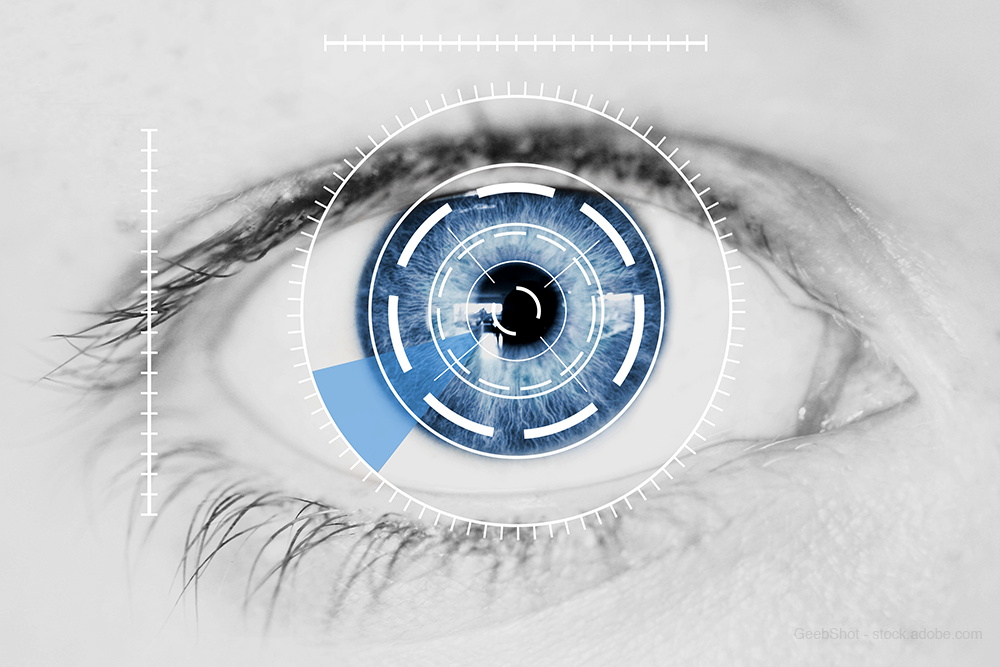Why Biometrics Are the Future of Patient Care
Patient identification is in desperate need of an overhaul-and biometrics could be the answer.

Most consumers are used to using their fingerprint to unlock their phones. That’s just one of the uses for biometric technology, which includes: fingerprint, iris, and facial recognition, as well as palm-vein readers to reduce the authorization fraud and security breaches common with passwords.
Government, financial, travel/logistics and consumer electronic industries have all ramped up use of biometric technology over the last few years and use in the healthcare industry also continues to increase.
The healthcare biometrics market is estimated to be worth $14.5 billion by 2025, due to the increase in healthcare information exchanges and the demand for technology that decreases data corruption and fraud, according to an analysis by Grand View Research. That represents a growth of 23% from 2017 to 2025, and Grand View predicts the growth of consumerism in healthcare will push many organizations to consider biometrics as it becomes the standard in other industries.
Sean Kelly, MD, chief medical officer at Imprivata, says the biometrics technology company works with 1,700 global healthcare customers in 39 countries and has seen an increase for the technology in healthcare settings.
“We have seen an increased investment in biometrics by our healthcare customers as a way to accurately identify people in their ecosystems, including patients and clinicians, maintain secure access to protected health information, and secure high-risk work flows such as electronic prescribing for controlled substances,” Kelly says.
Related article: Why Mismatched Patient Records are a Problem
Michael Trader, co-founder of RightPatient, Inc., says that his company has seen an increase in hospitals and clinics who are interested in their biometrics technology. Currently, RightPatient supports six different forms of biometric patient identification-fingerprint, finger vein, palm vein, iris, facial, and voice recognition-at 70 hospitals and hundreds of clinics.
“Compared to manual methods of identification that lead to an 18% average duplicate record, $1.5 million annual losses in claim denials, and a significant impact on patient safety, health systems should not see any limitations in implementing biometrics to address these issues,” Trader says.
How healthcare is using biometrics
Generally, healthcare organizations are using biometric solutions for two-factor or multifactor identification and single sign-in for staff and patient identification.
Because electronic prescribing for controlled substances is highly regulated, Kelly says that using biometrics is ideal for the required two-factor authentication. The Drug Enforcement Agency requires biometrics to meet criteria for false match rates and other regulatory specifications. According to Imprivata, fingerprint biometric identification has a false match rate of less than one in 1,000.
“Many organizations adopting electronic prescribing for controlled substances have selected biometrics, and specifically fingerprint biometrics, as one method of authentication for compliance,” Kelly says. “It is an easy, fast, and highly-secure way for prescribers to complete two-factor authentication.”
Patient identification is also a valuable use case for biometrics throughout the care continuum, including at point of care. One use case is radiation oncology, where healthcare providers want to be certain that they are treating the correct patient, Kelly says. “Patients may see this most at the point of registration, when the registration or patient access staff uses biometrics to make sure they are checking in the correct patient and bringing up the patient’s correct medical record.”
Rolling out biometrics across a health system
Keely Aarnes, PMP, assistant vice president of business operations for Northwell Health, says the health system is planning to rollout iris recognition for patient identification across more than 600 practices through the next 18 months. Working with RightPatient, Aarnes says the organization was able to pilot the technology at 11 practices before planning to expand the use across the organization.
Related: Featured Exec Michael Dowling: CEO of Largest Integrated Health System in New York
“We strategically went with iris recognition, because it takes a high-resolution photo of the patient’s face, which then uses the iris identification and that pattern to create an identifier,” Aarnes says. “That picture can be used for multiple use cases. One, we take that picture and send it through our EHR, which is a better level of identification for the clinician.”
Second, Aarnes says the health system would like to use facial recognition in the future to identify patients as they enter facilities and create a more concierge patient experience or warn staff of security risks.
Aarnes says high-resolution photos provide multiple use cases. “If we know that a patient has arrived, we can welcome them [and] send them messaging and way finding so that they know where to go. It also has a use case in the hospital where we can identify patients that we know we want to intervene early, such as central fraud or drug seeking.”
Aarnes believes the initial rollout of the iris recognition technology will allow the health system to solve security and patient experience challenges in the future.
“We need to really start thinking outside the box so we’re not just solving our immediate registration problems in a silo. We need to start thinking about what healthcare looks like in 10 years from now with telehealth services, online scheduling, filling out documents, and registration intake forms,” Aarnes says. “That process has to start with identification. That’s why we chose something that has the ability to be portable and not something that is tied to our registration station.”
Overcoming patient and provider skepticism
Though consumers are using biometric technology more often, patients and healthcare staff still need to be educated on how it works and why the organization is using these solutions, says Kelly.
“Healthcare organizations that are implementing biometrics will want to be prepared to overcome any stigma associated with this type of technology,” Kelly says. “Some providers or patients may be concerned that the government will get access to their information. However, the data is never shared outside the health system, and with some forms of biometrics such as palm vein recognition, there is no forensic value.”
According to a 2018 survey of 1,000 people by the Center for Identity at the University of Texas, Austin, 58% of respondents feel very comfortable with fingerprint recognition technology and about 33% are comfortable with other forms of biometrics technology.
Trader says that the biggest barrier that health organizations face when implementing biometrics is overcoming a culture that is resistant to innovation.
Related article: The 4 Technologies Healthcare Orgs Should Expect in 2019
“Patients are becoming increasingly tech savvy and they expect an experience like hospitality or retail,” Trader says. “If health systems acknowledge and embrace this fact, then moving forward with biometrics should not be a difficult process. There will always be skeptics but they are in the vast minority and many of them are typically won over when they see the technology in action and witness first-hand the impact that it delivers.”
Aarnes says it was important to develop on “elevator speech” for staff to explain to patients how the technology would be used and data would be stored.
“With our first launch, we really learned to stay away from using the verbiage, ‘scanning your iris’ because people have a negative connotation with the word ‘scan,’” Aarnes said. A lot of our staff training was educating them on how to speak to a patient about the technology. The technology in itself is pretty easy. It’s really just finding that sweet spot of informing and educating our patients that this is for their benefit in safety and ease of registration.”
So far, the health system has had 10,000 patients enrolled using iris recognition.

In the Scope of Virtual Health and the Future of “Website” Manner, Per Ateev Mehrotra
August 10th 2023Briana Contreras, an editor of Managed Healthcare Executive, had the pleasure of catching up with MHE Editorial Advisory Board Member, Ateev Mehrotra, MD, MPH, who is a professor of healthcare policy at Harvard Medical School and an Associate Professor of Medicine and Hospitalist at Beth Israel Deaconess Medical Center.
Listen